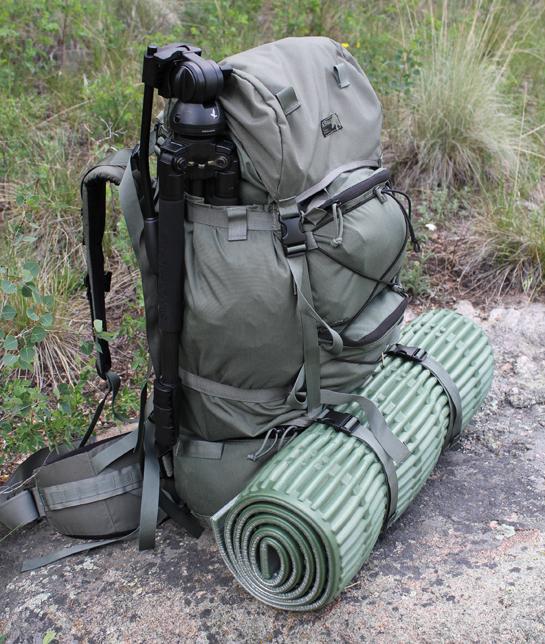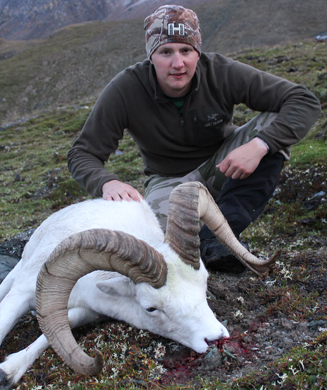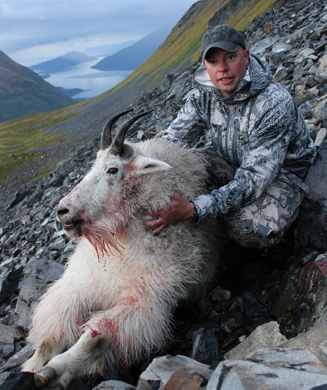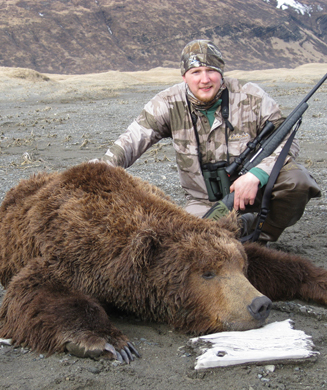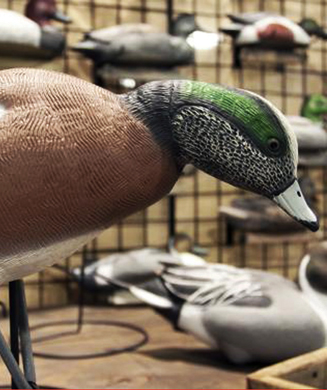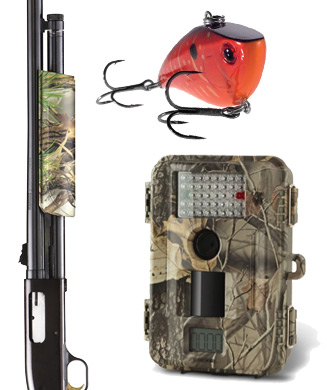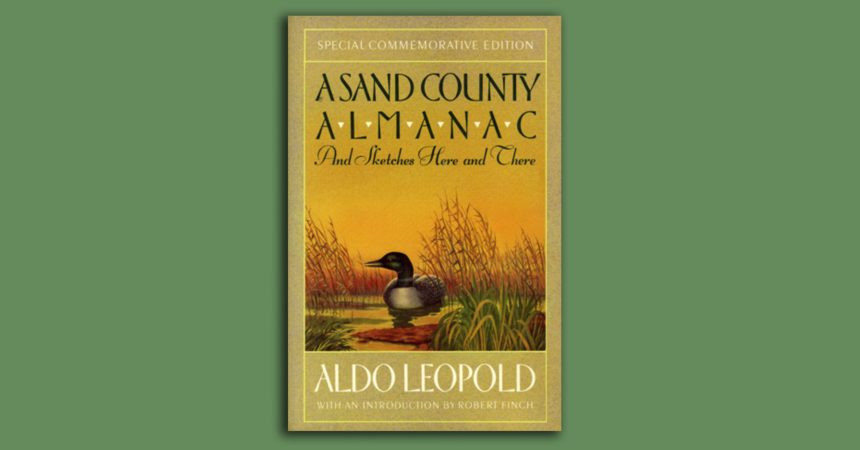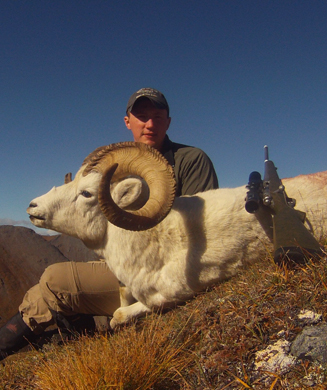I enjoy all types of hunting, but heading into the wilderness and living off of what’s on my back has always been my true passion. To do this type of hunting, you need a pretty good relationship with your backpack, and since my addiction to backpack/bivy hunting started, I have been on a never-ending quest for the perfect wilderness pack.
My search had almost ended a year ago when I met Patrick Smith (owner of Kifaru International) and started using his Kifaru packs, but something was missing. The comfort was there, but I needed just a few more extras to make the Kifaru packs perfect. So with a lot of encouraging (or pestering), a few headlocks and a couple of old dog vs young dog conversations, Patrick and I started to design the pack of my dreams (disclosure: Kifaru didn’t pay me anything to do this; I did it because I’m a gear nut and wanted to help build a perfect hunting pack).
The result is the new Kifaru Timberline, pictured here (click here for more photos).
Features
Weight: 5 lbs 9 oz’s
5,400 cubic inches of internal space
1,800 cubic inches of exterior pockets
Dual layer 500 denier Cordura on the bottom
Single layer 500 denier Cordura on everything else
Camouflage options: Multicam, Foliage, Olive Drab
Ultralight or Aluminum frame
Lid options: Flat Lid (standard with he pack), XTL (Military version) and normal Kifaru hunting lid
Building the Perfect Pack
First I needed a pack that had a comfortable suspension, functional and adjustable load lifters, as well as an adjustable yoke. Since Kifaru already offers all of these things, half of the battle was won before I started.
Next up was the overall weight. I wanted a pack that was less than 6 pounds, but able to handle 80-pound loads with extreme comfort and also sustain well over 120 pounds of weight. With this amount of weight, it was a no brainer to use the laminated stays that are currently being used in the the Kifaru KU pack. As some of you may already know, I was able to test these stays under more than 180 pounds of weight last season.
But I also wanted the pack to be durable enough so that it would still look good after I threw it down a rockslide. To get this type of durability and abrasion resistance, Patrick decided to use the tried and true 500D Cordura. But using this material meant we needed to do some creative designing. When the bag was being designed, we left out all of the “non mission essential” items, but kept the pack extremely functional. When I say “non mission essential,” I’m talking about the excess webbing on the hip belt, unneeded plastic D rings and buckles and small useless pockets that hold nothing but toothbrushes.
Using it as a Daypack
Having a functional daypack when you get 6 miles into the wilderness is a must, and digging around the bottom of a 5,000 CI pack for a headlamp is a pain in the butt, so we added two 300 CI zippered pockets between the pack’s horizontal compression straps and then crisscrossed a stretchy cord over them to keep everything from bouncing around when the pack is not completely full.
These pockets will be large enough to keep water filters, headlamps, knives, GPS’s and all the normal things you need when day hunting. For the tripod and spotter, we attached 2 vertical 600 CI non zippered pockets. These pockets work well for a spotter and tripod, but are also perfect for rain gear, tents and any other large items that you may need to access quickly. The size of the pockets were measured when the pack was full, so the size will grow a bit when the pack is empty and compressed.
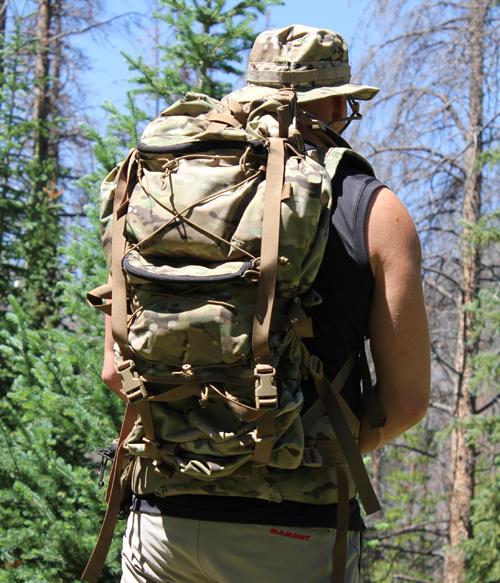
Field Testing
Now that the pack was built, it was time for some serious testing. I already knew the pack design was comfortable and functional for me, but I wanted to make sure to get several other hunters’ opinions before giving Patrick my thoughts.
To make it as non-biased as possible, every time I headed into the mountains I would take a different buddy that had his own favorite pack. We would then readjust and swap packs halfway through the journey and head back toward the trailhead. These trips ranged anywhere from 1 to 4 nights over 10 to 35 total miles. Doing it this way gave each user a real life side-by-side “mountain terrain” comparison on comfort and functionality over several miles. I ended up having 5 different hunters, 2 non hunters and my wife along with their favorite packs (varying in torso length and size), go against the Timberline head to head. I am pleased to say that the consensus of all testers heavily favored to the Timberline. With that being said, this pack was designed for multi-day hunting trips as well as day hunts when you don’t want to head back to the truck to grab another pack.
The 7,200 cubic inches will seem a bit overboard for 1-3 night trips, but as the pictures show, this pack is extremely versatile and will work well for the shortest overnight trip. Another thing to think about (Patrick may shoot me for saying this) is the option of cutting the material off above the first draw cord.
Saying I’m excited about this pack is an understatement, and for the first time in my hunting career I’m not getting back to the trail head hoping I find something better.
So enough with the talk, here are some photos of the Kifaru Timbelrine in action.
Click here for more on how to choose a hunting pack.
